لیتوگرافی خراشی
Dip pen nanolithography (DPN5000)
معرفی دستگاه
نانولیتوگرافی قلم فرو (DPN) یک تکنیک لیتوگرافی پروب روبشی است که در آن از نوک میکروسکوپ نیروی اتمی (AFM) برای ایجاد الگوهای مستقیم روی طیف وسیعی از مواد با جوهرهای مختلف استفاده میشود. نمونه رایج این روش با استفاده از آلکان تیولات برای حک کردن بر روی سطح طلا می باشد.
این تکنیک امکان الگوسازی سطح را در مقیاس های زیر 100 نانومتر فراهم می کند. DPN فناوری نانو قلم غوطهوری است (که به آن قلم پر نیز میگویند)، که در آن نوک یک سوزن میکروسکوپ نیروی اتمی بهعنوان یک قلم عمل میکند که با یک ترکیب شیمیایی یا مخلوطی که بهعنوان یک «جوهر» عمل میکند، پوشانده شده است.
کاربردهای این فناوری در حال حاضر شامل شیمی، علم مواد و علوم زیستی میشود و شامل کارهایی مانند نانوآرایههای بیولوژیکی با چگالی فوقالعاده و تعمیر ماسکهای نوری میشود.
این تکنیک امکان الگوسازی سطح را در مقیاس های زیر 100 نانومتر فراهم می کند. DPN فناوری نانو قلم غوطهوری است (که به آن قلم پر نیز میگویند)، که در آن نوک یک سوزن میکروسکوپ نیروی اتمی بهعنوان یک قلم عمل میکند که با یک ترکیب شیمیایی یا مخلوطی که بهعنوان یک «جوهر» عمل میکند، پوشانده شده است.
کاربردهای این فناوری در حال حاضر شامل شیمی، علم مواد و علوم زیستی میشود و شامل کارهایی مانند نانوآرایههای بیولوژیکی با چگالی فوقالعاده و تعمیر ماسکهای نوری میشود.
مشخصات دستگاه
DPN 5000 Desktop Nanofabrication System
:features
- • Achievable resolution depends highly on ink/substrate combination. Highest resolution if offered by DPN (20 nm resolution for thiols on gold, or 100 nm for phospholipids), PPL and FluidFM offer high to medium resolution (50nm to 5µm) and µCS larger features (5µm to 50µm).
- • Throughput on the order of cm2/min using massively parallel arrays
- • Compatible with biological molecules (e. g. DNA, protein & phospholipids
- • Phospholipid based inks can write on a variety of surfaces – metals, insulators, hydrophobic, hydrophilic, etc.
- • Capability of integrating multiple ink materials on a single substrate (Multiplexing)
- • Compatible with pre-structured surfaces and pre-manufactured devices
- • Additive fabrication process, digital and maskl
:Limitations/constraints
- • There must be a driving force for the ink to flow from the tip to the sample, stability of patterns depends on surface and ink properties and whether covalent binding occurs
- • Parallel integration of different inks requires that the different inks have similar transport properties
- • Each tip in a passive parallel array draws the same structure
- • A high throughput quality control method must be used for massively parallel fabrication
- • Area of single sub-pattern (before parallel repetition) is usually in the range of 60 × 60 to 100 × 100 µm2 depending on technology and machine
- • Alignment marks must be used to align with pre-patterned substrates, prestructures must be observable by optical microscopy
- • Standard sample size are aprox. 5 × 5 mm² to 2 × 2 cm², thicknesses about 0.5 to 2 mm. Samples of larger or smaller dimensions can be accommodated with special precautions.
:Materials
A wide range of materials as inks and substrates can, be processed with the techniques here some typical applications, please discuss your particular wish with the technology expert. In general
- • DPN, PPL: Molecular inks (e.g. thiols, azides, phospholipids), viscous inks (polymers, e.g. PEG)
- • µCS, FluidFM: viscous inks (solvents carrying functional molecules or nanoparticles)
- • Typical substrates: glass, silicon, PMMA, polystyrene, Metals (e.g. Au, Ti)
دریافت خدمات دستگاه
- • جهت تعیین وقت و انجام آنالیز لطفا فرم مربوط به خدمات این دستکاه را تکمیل و ارسال کرده و با واحد پذیرش تماس حاصل فرمایید.
- • لازم بهذکر است اعضای محترم هیاتعلمی دانشگاه شهید بهشتی از تخفیف مصوب هیئت ریسه دانشگاه برخوردار خواهند بود




